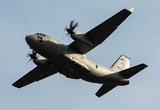Germany selects consortium to develop key SCAF technologies and ‘remote carriers’
Expandable remote carrier is an integral part of the SCAF programme and its main purpose will be to confuse the enemy and lure its air defence system out. (Photo: MBDA)
Airbus has joined forces with Future Combat Mission System (FCMS) and MBDA Germany to develop key technologies for the Next-Generation Weapon Systems (NGWS) programme after the companies signed a contract with the German defence procurement agency (BAAINBw).
As a central part of the Franco-German-Spanish Future Combat Air System FCAS/SCAF programme, the NGWS includes a next-generation combat aircraft (New Generation Fighter or NGF) and UAS (Remote Carrier or RC), which will be connected via a data cloud to other systems and platforms.
The effort, carried out on behalf of the German MoD, will attempt to complement the NGWS programme as it intends to develop and demonstrate complementary basic technologies and partial functionalities for the use of NGWS from 2040.
Related Articles
Belgium joins FCAS programme at Paris Air Show 2023
DSEI 2023: MBDA details CONOPS for Spear-EW stand-off jammer as MoD releases development funds
Speaking to Shephard, Sven-Michael Wundenberg, sales and business development manager for air systems at MBDA Germany, said the current phase of the effort would focus on technology maturation.
The official added that there were certain areas that the NGWS and SCAF programmes do not cover, and which would be addressed under the newly announced research and technology (R&T) project.
Developing expendable remote carrier (ERC)
MBDA said the ERC was an integral part of the SCAF programme, and its main purpose was to confuse the enemy and lure its air defence system out. Neither a drone nor a missile, the uncrewed asset would bring a set of new capabilities to the NGWS programme, according to MBDA.
The fundamental concept would use electronic reconnaissance and communication devices to confuse enemy air defence systems while communicating with friendly pilots in real time.
MBDA, who has been developing the remote carriers, said they could be used on a large spectrum of missions, including air-to-air strikes, deep-strike, tactical strikes and air-to-sea missions.
The company has been running two main activities under its remote carrier effort, with one activity seeking to build an ERC demonstrator and mature the technology.
Concurrently, the multinational firm has been considering what the operational project should look like, with the main objective to fly a remote carrier demonstrator in 2029 – which will also be when the second phase of NGWS has been scheduled to begin – as MBDA revealed in a video published during the Paris Air Show 2023.
The demonstrator ERC is set to be 4m long, weigh some 400kg, fly at subsonic speed and have a one-hour endurance, MBDA said.
Shephard's Dubai Airshow 2023 coverage is sponsored by:

Related Programmes in Defence Insight
Next-Generation Weapon System (NGWS) (FCAS) [Germany]
More from Dubai Airshow 2023 | View all news
-
![South Korea and Boeing to jointly research long-endurance aerial UAVs]()
South Korea and Boeing to jointly research long-endurance aerial UAVs
Boeing and South Korea have solidified plans that would see Boeing UAV design and technology capabilities implemented locally by South Korean companies.
-
![Ukraine fields 5,000 homegrown drones amid Iran's debut of advanced Shahed-238 UAV]()
Ukraine fields 5,000 homegrown drones amid Iran's debut of advanced Shahed-238 UAV
Amid escalating tensions and technological advancements in drone warfare, Ukraine has reinforced its front lines with a delivery of 5,000 indigenous drones, paralleled by Iran's revelation of the new jet-powered Shahed-238.
-
![Brazil receives first fully operational upgraded E-99M AEW&C]()
Brazil receives first fully operational upgraded E-99M AEW&C
The updated E-99M aircraft features an updated Erieye Radar and C2 systems, as well as new EW and Identification, friend or foe (IFF) systems.
-
![Slovenia secures second C-27J Spartan tactical transport aircraft]()
Slovenia secures second C-27J Spartan tactical transport aircraft
A new agreement between Leonardo, the Italian government and Slovenia has marked the procurement of a second C-27J Spartan medium tactical transport aircraft for Slovenia, following an earlier deal signed in March 2022.
-
![Boeing shifts towards low-rate MH-139A Grey Wolf production]()
Boeing shifts towards low-rate MH-139A Grey Wolf production
Boeing's progress in the MH-139A Grey Wolf helicopter programme have marked a milestone in the transition toward low-rate initial production, following the delivery of the final test aircraft to the US Air Force.
-
![Boeing and Red 6 make moves on airborne augmented reality training]()
Boeing and Red 6 make moves on airborne augmented reality training
Boeing and augmented reality training specialist Red 6 have achieved notable progress in integrating advanced technology into training aircraft.


























